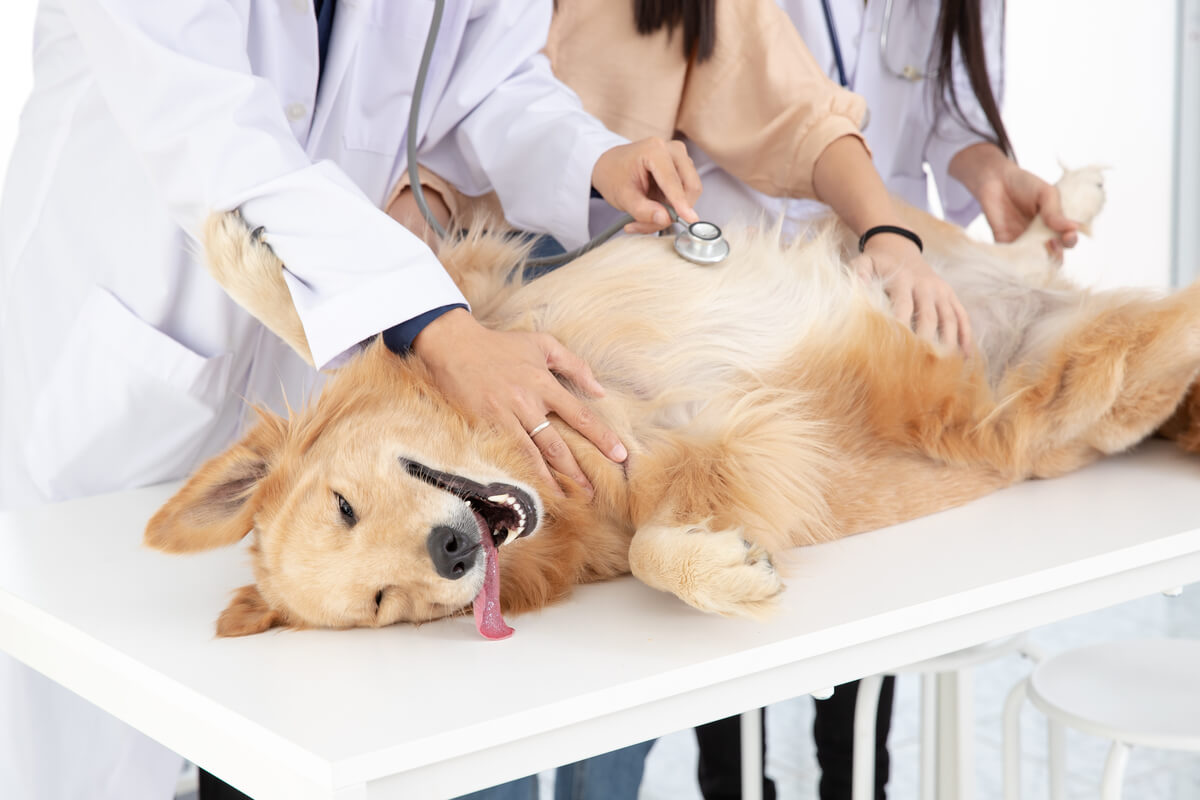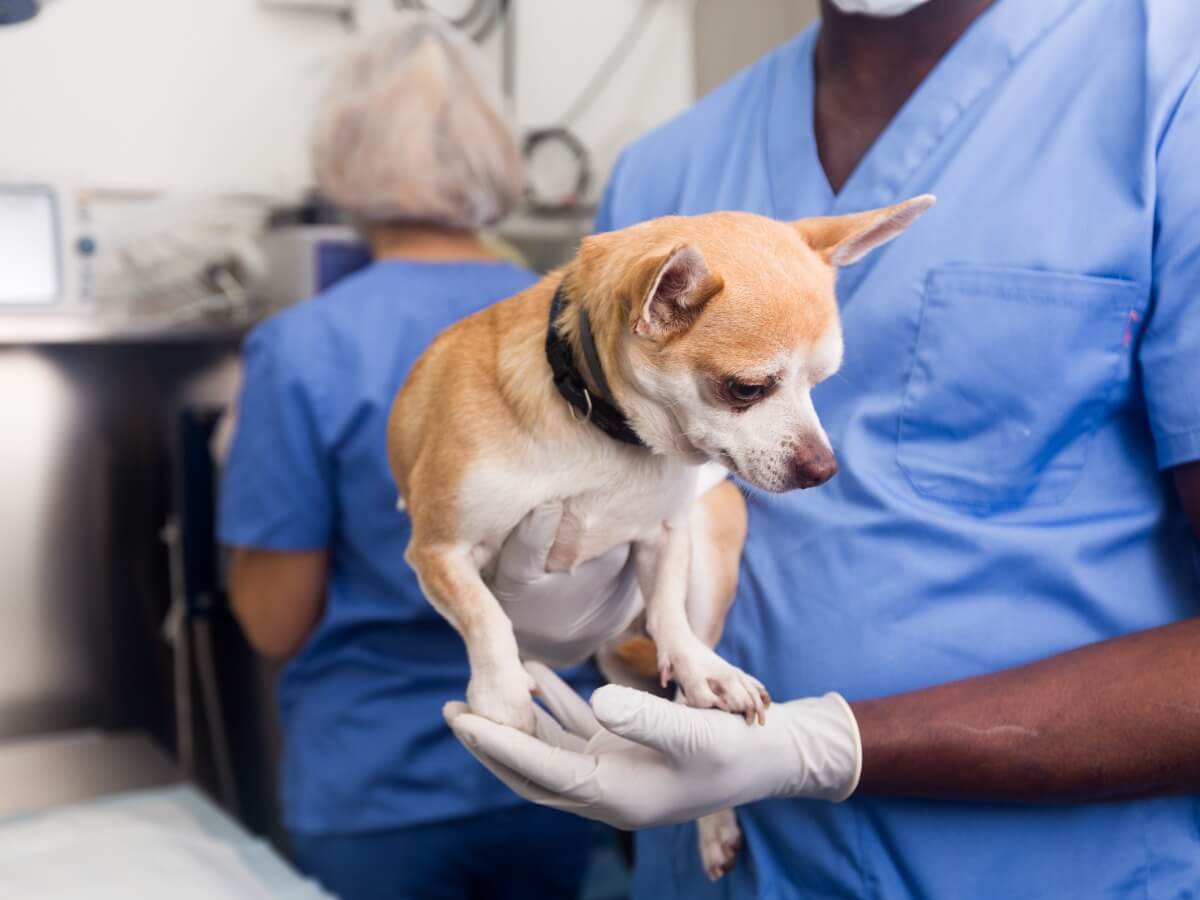Caring for a Sterilized Dog


Reviewed and approved by the biologist Samuel Sanchez
It is important to know all about caring for a sterilized dog before carrying out the operation. This is surgery that every owner should plan, because it’s essential to manage unwanted pregnancies and to control diseases in the pet.
After being spayed or neutered, all dogs need special attention after surgery and throughout their lives. For example, many companion animals become obese and lazy because their owners overfeed them and don’t provide enough exercise. We invite you to find out all about caring for a sterilized dog.
What is sterilization?
When a dog is spayed, it has gone through a complex veterinary medical procedure. In it, their reproductive organs are extracted, with the aim of preventing diseases, malignant tumors and controlling the birth rate.
In this procedure, anesthesia is used so that the dog doesn’t feel any pain. However, this can lead to disorientation and vomiting effects, which are very uncomfortable for animals once they wake up. Therefore, it’s important to know how to look after your dog after this surgery.

Clearing up the terms
In castration, the male’s testicles and the female’s ovaries and uterus are removed. Sterilization, on the other hand, is a less invasive technique that doesn’t eliminate the effect produced by hormones. The latter is carried out by the separation of the semen-containing ducts in dogs and by a fallopian tube ligation in bitches.
With both techniques, control of reproduction is achieved, but castration eliminates behavior and physical changes related to hormones that sterilization doesn’t suppress. This is because it isn’t necessary to remove any organs. In order to do this, there are other techniques within sterilization, such as vasectomy, tubal ligation or hysterectomy (removal of the uterus).
Caring for a sterilized dog
There are aspects that you should take into account with your dog just after surgery and throughout the animal’s life. The time it takes for a spayed dog to recover from surgery is about a week and a male dog takes about 5 days.
At this time, you’ll see apathy, a loss of appetite, and less activity in the animal, among other symptoms. Therefore, right after surgery, we recommend the following:
- Provide good shelter for your dog when they’re home, as the anesthesia may lower their temperature. In addition, you should always carry them face down facing the floor, to prevent him from choking in case he vomits.
- Once at home, place them in a safe place where there’s no risk of falling down stairs or where there are no loud noises that could cause stress.
- Don’t force the dog to eat. The effect of anesthesia can make them vomit, so don’t force them to do anything they don’t want to do. When they’re feeling better, they’re sure to look for food.
- Put an Elizabethan collar on the dog, to avoid scratching the area of the operation and removing the stitches. You can also make a girdle with old shirts in the case of females. Make sure the fabric is clean and change it every day.
- Clean the wound area taking into account the recommendations of your veterinarian. Normally, dressing the wound will start the next day. Don’t encourage your dog to play roughly or move a lot, at least until 3 days after surgery.
Other tips for caring for a sterilized dog
In addition to this, you should keep an eye on the dog’s body temperature. Make sure that there are no strong drafts where it’s resting, nor direct exposure to the sun. Always use a blanket to maintain a good body temperature. If you see that it’s very cold, use hot water bottles wrapped in towels around their bed.
When the effects of the anesthesia are no longer evident, put a container of water nearby. Prepare them some natural, soft food, as the effects of the anesthesia will make it difficult for them to swallow or chew.
After surgery, obesity must be prevented and monitored for the rest of the animal’s life. This is very necessary, since, after neutering and spaying, the dog will gain weight a lot easier. We recommend consulting with a veterinarian to create an individualized diet plan.
Sterilization decreases the basal metabolic rate of the animal, which helps it gain weight. It is often necessary to change your diet.
Do bitches go into heat after being spayed?
When they’re castrated, the females are left without eggs, so they stop producing hormones such as estrogens and progesterone, and so their heat disappears. Another situation that castration brings with it is that it reduces the risk of breast tumors and eliminates pseudopregnancy, since both events are mediated by hormonal processes.
On the other hand, in sterilization only the tubal ligation occurs, so the canine’s hormonal balance remains. Therefore, the bitch will have typical behaviors of heat, although it can’t have offspring.
Do dogs stop chasing female dogs after being spayed?
Castration in males influences reproductive behavior. When the testicles are removed, the production of testosterone, the male sex hormone par excellence, is stopped. In this way, sexual desire and dominance are prevented, thus reducing aggressiveness. If only the semen-producing ducts are cut but the testes remain, typical male heat behaviors will continue.

A necessary procedure
Did you know that pet euthanasia rates greatly increase in areas where there are no sterilization programs available? According to the Humane Society International, dogs are 15 times more prolific than humans and, when they’re spayed or neutered, overpopulation and the presence of abandoned dogs are avoided.
Not only that: both processes prevent pathologies in pets in the long term. Although caring for a sterilized dog isn’t easy, the operation is always worth it.
All cited sources were thoroughly reviewed by our team to ensure their quality, reliability, currency, and validity. The bibliography of this article was considered reliable and of academic or scientific accuracy.
Affinity – Vets & Clinics. (s. f.). Castrar perro postoperatorio. Necesidades y cuidados más frecuentes. Recuperado 9 de agosto de 2021, de https://www.affinity-petcare.com/vetsandclinics/es/castrar-perro-postoperatorio-necesidades-y-cuidados-mas-frecuentes
AVATMA. (2021, 1 febrero). Esterilización y Castración en Animales de Compañía. Un Debate Necesario. Ventajas e Inconvenientes. https://avatma.org/2021/02/01/esterilizacion-y-castracion-en-animales-de-compania-un-debate-necesario-ventajas-e-inconvenientes/
Castiblanco, C. (2020, 22 noviembre). ¿Cómo cuidar a tu perro o gato luego de la esterilización? Sigue estos consejos. Bogota.gov.co. https://bogota.gov.co/mi-ciudad/ambiente/esterilizacion-de-perros-y-gatos-cuidados-postoperatorios
HSI. (s. f.). La Importancia de Esterilizar y Castrar a sus Animales de Compañía. Humane Society International. Recuperado 9 de agosto de 2021, de https://www.hsi.org/wp-content/uploads/assets/pdfs/why_spayneuter_is_important_spanish.pdf
Kivet. (2021, 1 julio). ¿Sabes qué cuidados necesita tu perro o perra recién esterilizada? Clínicas Veterinarias Kivet. https://www.kivet.com/cuidados-perro-perra-despues-esterilizar/
This text is provided for informational purposes only and does not replace consultation with a professional. If in doubt, consult your specialist.